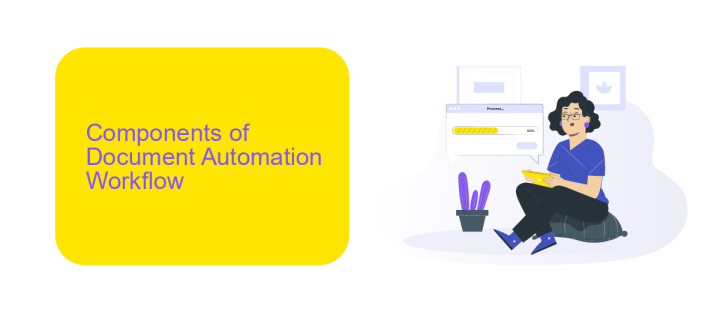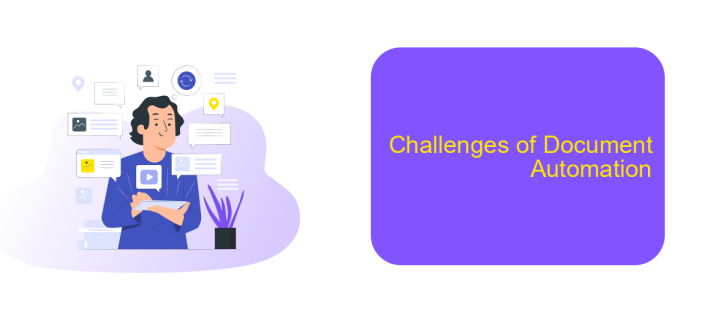Document Automation Workflow
In today's fast-paced business environment, efficiency and accuracy are paramount. Document automation workflow streamlines the creation, management, and distribution of documents, reducing manual effort and minimizing errors. By leveraging advanced technologies, organizations can enhance productivity, ensure compliance, and improve overall operational efficiency. This article explores the key components and benefits of implementing a document automation workflow in your business processes.
Introduction
Document automation workflow is revolutionizing the way businesses handle their documentation processes. By automating repetitive tasks, organizations can significantly reduce the time and effort required to manage documents, allowing employees to focus on more strategic activities. This transformation not only enhances productivity but also minimizes the risk of human error, ensuring higher accuracy and compliance.
- Streamlines document creation and management
- Reduces manual data entry and associated errors
- Integrates with existing systems for seamless operations
- Enhances security and compliance with automated tracking
One of the key components of an efficient document automation workflow is the integration with various tools and services. ApiX-Drive, for instance, offers a robust platform to connect different applications, enabling seamless data transfer and synchronization. By leveraging such integrations, businesses can further optimize their workflows, ensuring that all systems work in harmony and that data is consistently up-to-date across platforms.
Components of Document Automation Workflow

Document automation workflows are comprised of several key components that work together to streamline and optimize the document creation and management process. The first critical component is the document generation tool, which automates the creation of documents based on predefined templates and data inputs. These tools often integrate with databases and other data sources to pull in the necessary information, ensuring accuracy and consistency across all generated documents. Additionally, document generation tools can include features for customization, allowing users to tailor the output to meet specific needs.
Another vital component is the integration platform, which facilitates seamless communication between different software applications involved in the workflow. Services like ApiX-Drive enable users to connect various apps and automate data transfers without requiring extensive coding knowledge. This integration ensures that data flows smoothly from one system to another, reducing manual input and the potential for errors. Finally, document storage and management systems play a crucial role in organizing, storing, and retrieving documents efficiently. These systems often include features for version control, access permissions, and collaboration, making it easier for teams to work together and maintain compliance with regulatory requirements.
Benefits of Document Automation

Document automation significantly streamlines the process of creating, managing, and distributing documents within an organization. By automating repetitive tasks, businesses can save valuable time and resources, allowing employees to focus on more strategic activities.
- Increased Efficiency: Automation reduces manual data entry and minimizes human errors, leading to faster document processing.
- Cost Savings: By decreasing the need for physical storage and reducing labor costs, businesses can achieve substantial financial benefits.
- Improved Accuracy: Automated systems ensure consistency and accuracy in document creation, which is crucial for compliance and decision-making.
- Enhanced Integration: Tools like ApiX-Drive facilitate seamless integration between various software systems, enabling smooth data flow and improved collaboration.
- Scalability: Document automation solutions can easily scale with the growth of the business, accommodating increasing volumes of documents without additional strain on resources.
Implementing document automation can lead to a more organized and efficient workflow, ultimately boosting overall productivity. By leveraging tools such as ApiX-Drive, businesses can integrate various systems effortlessly, ensuring a cohesive and streamlined document management process.
Challenges of Document Automation

Implementing document automation can be a complex process that presents several challenges. One of the primary obstacles is ensuring the accuracy and consistency of data across various documents. Even minor errors can lead to significant issues, especially in legal and financial contexts.
Another challenge is integrating document automation systems with existing software and workflows. Many businesses use a variety of tools and platforms, making seamless integration difficult. For instance, coordinating between different data sources and ensuring real-time updates can be particularly challenging.
- Data accuracy and consistency
- Integration with existing systems
- Maintaining security and compliance
- User adoption and training
Services like ApiX-Drive can help mitigate some of these challenges by providing robust integration solutions. They allow businesses to connect various applications and automate workflows without extensive technical knowledge. However, it's crucial to ensure that all team members are adequately trained and that security measures are in place to protect sensitive information.
Future of Document Automation
The future of document automation is poised to revolutionize the way businesses handle their paperwork. With advancements in artificial intelligence and machine learning, document automation systems are becoming more intuitive and efficient. These technologies enable systems to understand context, extract relevant information, and even make decisions based on predefined rules. This not only reduces the time spent on manual data entry but also minimizes errors, leading to more accurate and reliable document processing.
Moreover, the integration of document automation workflows with other business systems is becoming increasingly seamless. Services like ApiX-Drive facilitate these integrations, allowing businesses to connect their document automation tools with CRM, ERP, and other essential platforms effortlessly. This connectivity ensures that data flows smoothly across different systems, enhancing overall operational efficiency. As these technologies continue to evolve, we can expect even greater levels of automation, further reducing the need for human intervention and enabling businesses to focus on more strategic tasks.
FAQ
What is document automation workflow?
How can I start implementing document automation in my organization?
What types of documents can be automated?
How does document automation improve efficiency?
Can document automation be integrated with other software tools?
Strive to take your business to the next level, achieve your goals faster and more efficiently? Apix-Drive is your reliable assistant for these tasks. An online service and application connector will help you automate key business processes and get rid of the routine. You and your employees will free up time for important core tasks. Try Apix-Drive features for free to see the effectiveness of the online connector for yourself.

